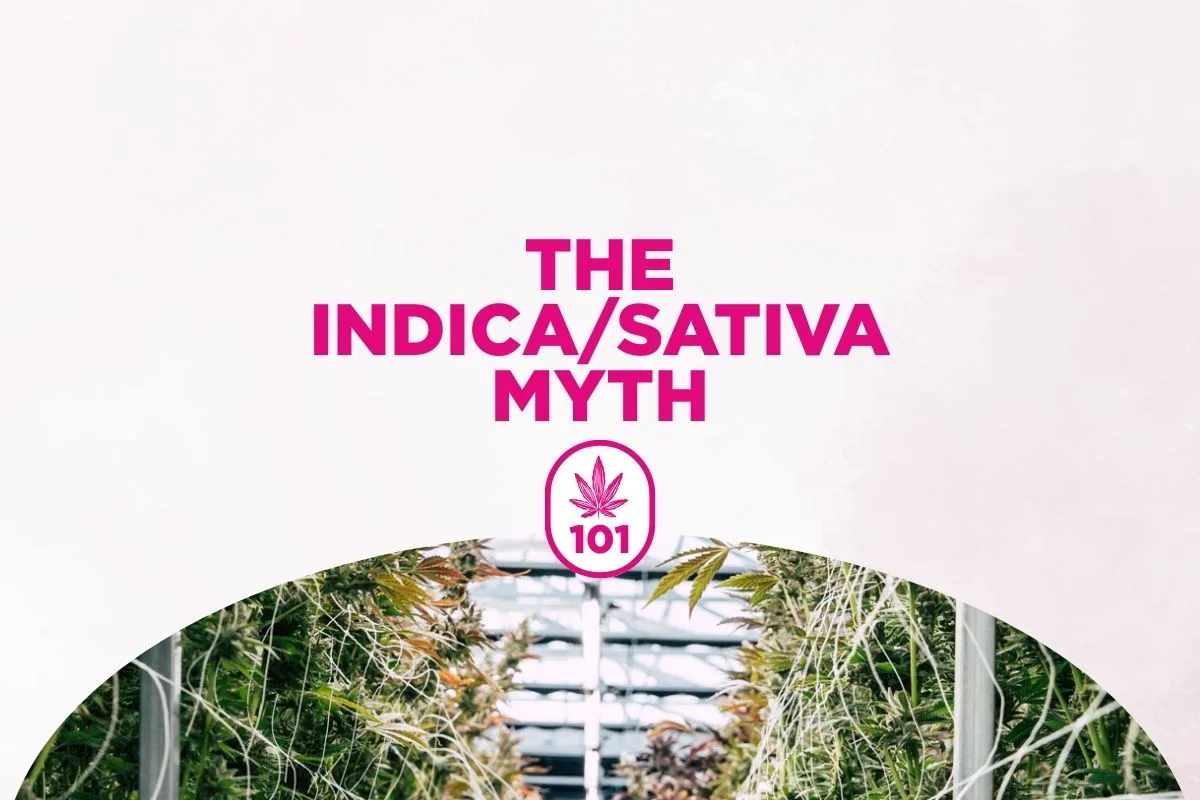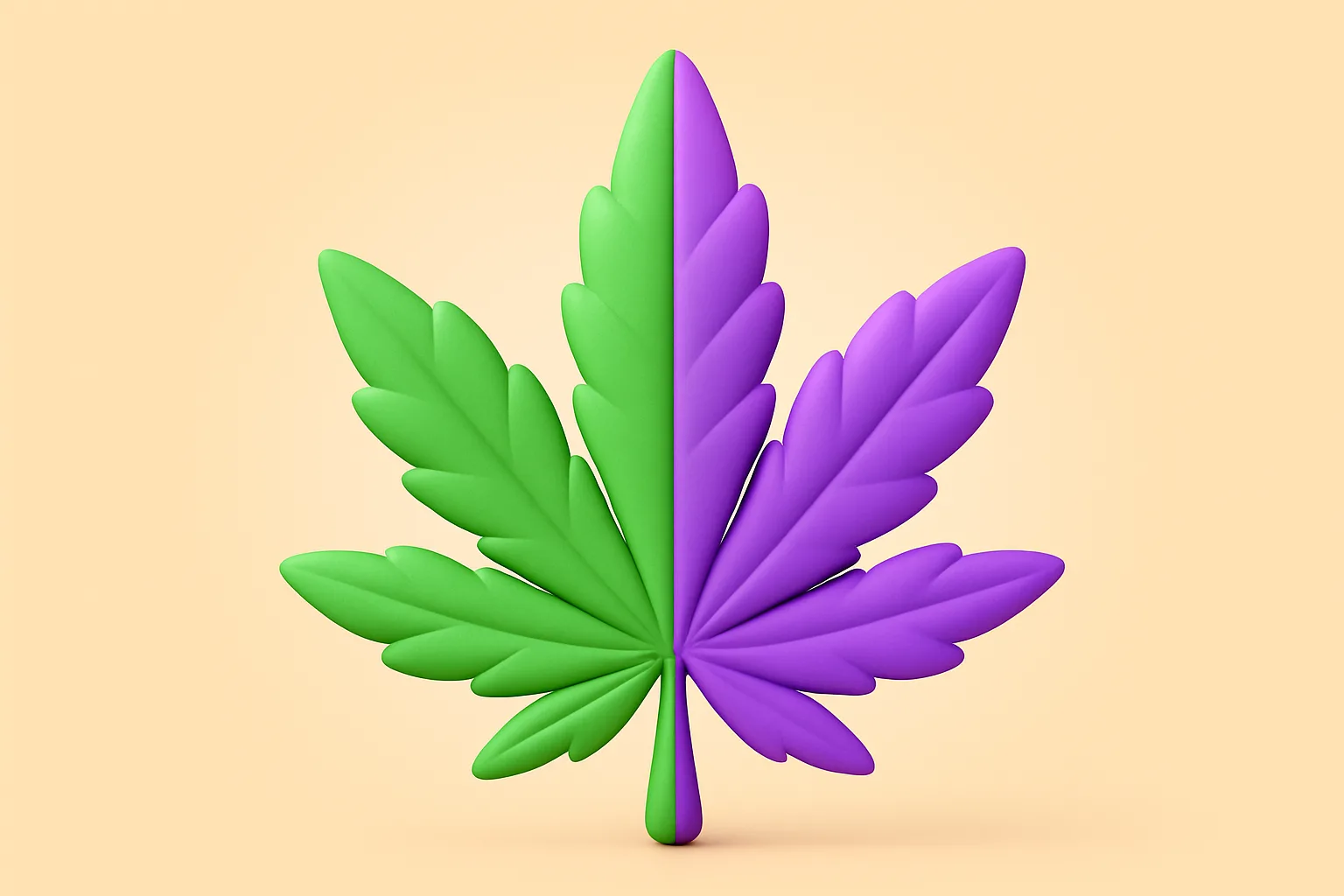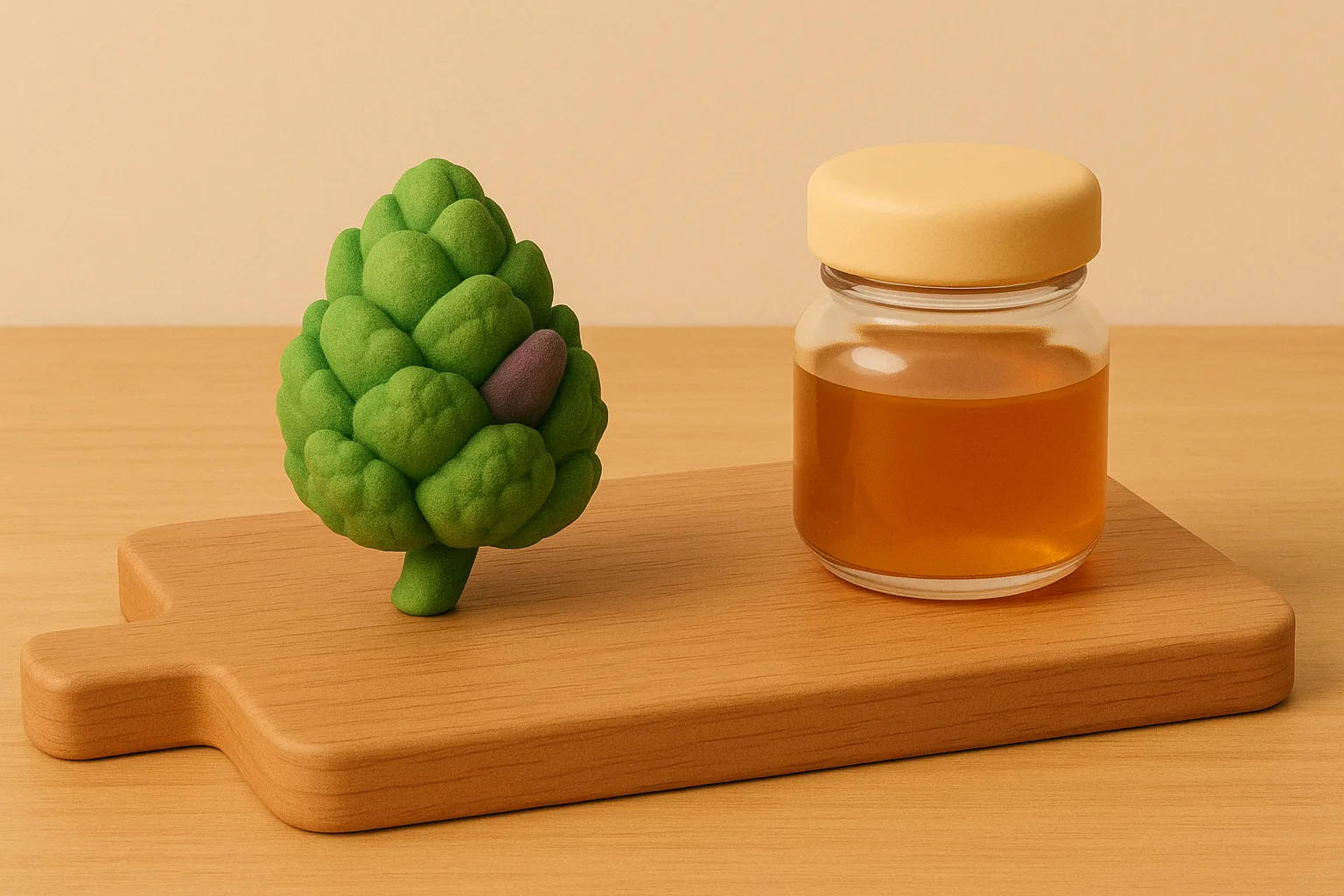

If you’re new to cannabis, the flood of unfamiliar words can feel completely overwhelming. From technical terms like “cannabinoids” to casual slang tossed around at the dispensary like “dab” or “terp,” it’s easy to feel lost.
No matter your starting point, at Shangri-La, our mission is to empower you. Whether you’re an OG cannabis lover trying to get a handle on the new vocabulary or someone who has never tried even a puff, we’re here to help.
This Cannabis Glossary breaks down all the cannabis essentials in clear, friendly language. With this canna-dictionary in hand (and our budtenders around as backup), you’ll get the hang of the essential terms in no time.
Starting with the basics is the best way to build confidence as you shop. These standard terms lay the foundation for understanding products, effects, and conversations you’ll encounter along your cannabis journey:
Cannabis: The scientific name for the plant family. It includes both THC-rich types (like what you’ll most often find in dispensaries) and hemp, a generally non-intoxicating version. Cannabis plants are cultivated worldwide for their therapeutic, recreational, and industrial uses.
Marijuana: A term often used to describe cannabis varieties with higher levels of THC, the compound that produces a psychoactive “high.” In most federal and state legislation, cannabis is legally referred to as marijuana. While widely recognized, “marijuana” is outdated, and many people prefer to use the term “cannabis” to avoid lingering stigma.
Hemp: A variety of cannabis that contains very low amounts of THC (under 0.3% by law in the U.S.). Hemp is often grown to make CBD-rich wellness products, fibers for textiles, and seeds for food and oil production.
Weed: Slang for cannabis. You might also have heard other nicknames like “pot,” “grass,” “ganja,” “bud,” and “herb.” You’ll often hear these in social conversations, but at the dispensary, we try to stick with terms like “flower” or “cannabis.”
Strain: A specific variety of cannabis bred for particular genetics, flavors, aromas, and effects. Strains often have creative names like Blue Dream or Pineapple Express.
Cannabinoids: The family of natural compounds found in cannabis that interact with your body’s endocannabinoid system (ECS). Beyond the most well-known, THC and CBD, there are over 100 cannabinoids, each with unique effects.
Terpenes: These are the aromatic oils in cannabis that give strains their distinctive scents and flavors. Think: citrus, pine, spice, gassy, or floral. Terpenes not only shape your sensory experience but may also influence how cannabinoids affect you, a concept called the “entourage effect.” Every cannabis strain contains a one-of-a-kind aromatic fingerprint made up of dozens of terpenes.
THC (Tetrahydrocannabinol): The most well-known cannabinoid and the one responsible for cannabis’s intoxicating effects, known as the “high.” THC interacts with receptors in your brain to produce euphoria, relaxation, altered perception, and other effects.
CBD (Cannabidiol): A non-intoxicating cannabinoid popular for its potential to promote calm, focus, and relief from discomfort. CBD products are typically sourced from hemp varieties of cannabis. They are widely available and often chosen by those seeking wellness benefits without feeling “high.”
There’s no single “right way” to enjoy cannabis. It all comes down to your comfort level, lifestyle, and goals. Here are the most common ways people consume cannabis, including a few notes on what makes each unique.
Smoking: The most traditional method, smoking involves burning and then inhaling dried cannabis flower through a joint, pipe, or bong. Effects are felt quickly, usually within a few minutes, but aren’t always consistent from one session to the next.
Vaping: Vaporizers heat cannabis flower or concentrated oil at lower temperatures than smoking, producing vapor rather than smoke. Many consumers find vaping to be smoother on the lungs and the process much more discreet than smoking. People who rely on cannabis’s therapeutic effects often prefer vaping over smoking.
Edibles: These are foods or drinks infused with cannabis. Think gummies, chocolates, cookies, or teas. Because edibles are digested, they take longer to kick in (anywhere from 30 minutes to a few hours) but deliver stronger, longer-lasting effects. Start with a low dose and be patient before consuming more.
Tinctures: Liquid cannabis extracts, often sold in small bottles with droppers, are designed to be taken under the tongue or mixed into foods. This “sublingual” method allows cannabinoids to absorb into the bloodstream quickly, faster than edibles but slower than smoking or vaping.
Topicals: Cannabis-infused creams, lotions, and balms are applied directly to the skin. They don’t produce a psychoactive high but may provide localized relief for sore muscles, inflammation, or skin irritation.
Dabs: Short for “dabbing,” this method uses highly concentrated cannabis extracts (like wax, shatter, or live rosin) that are flash-vaporized on a heated surface and inhaled. Dabs deliver very strong effects and are generally recommended only for experienced users.
Walking into a dispensary for the first time can feel like stepping into a whole new world. The shelves are filled from floor to ceiling with a magical array of possibilities. Cannabis comes in many forms, each designed for different preferences, effects, and lifestyles. Here are the most common product types you’ll find on store shelves:
Flower: The dried buds of the cannabis plant, often smoked in joints, pipes, or bongs, or vaporized in a dry herb vaporizer. Flower is prized for its variety of strains, aromas, and nuanced effects.
Pre-rolls: Convenient, ready-to-smoke joints that come filled with dried flower. Pre-rolls save you the effort of rolling and are great for beginners or anyone who wants a simple, convenient option. You’ll typically be able to find them in single servings or multi-packs.
Concentrates: Potent extracts made by concentrating the resinous trichomes from cannabis flower. There are dozens of types and subtypes within this category, each named for its consistency and the extraction method. Popular concentrates include wax, shatter, live resin, and rosin. Although cannabinoid profiles vary, most deliver very high THC levels, anywhere from 60 to 90 percent. Concentrates are usually consumed by dabbing or in vape cartridges and are best suited for experienced users.
Edibles: Cannabis-infused foods and beverages such as gummies, baked goods, chocolates, or teas. Edibles take longer to kick in but can provide effects lasting several hours. They also offer a more consistent and predictable experience from one session to the next. Because the onset is slower, it’s important to start with a low dose and wait before consuming more.
Vape Cartridge/Pods: Pre-filled with cannabis oil, these convenient cartridges are designed for seamless use with a wide range of vape batteries, making them one of the most popular and accessible cannabis products on the market today.
Suppositories: A niche but relevant option in wellness and medical use for localized absorption.
Transdermal Patches: Slow-release patches that deliver cannabinoids through the skin into the bloodstream.
Capsules & Tablets: These pill-style products provide precise, consistent dosing. They’re a discreet and familiar option for those who prefer a more traditional medicinal experience, often favored by medical cannabis patients.
Topicals: Creams, balms, lotions, and salves infused with cannabinoids, applied directly to the skin. Topicals are designed for localized relief from soreness, inflammation, or irritation, and typically don’t produce psychoactive effects.
Understanding how cannabis strength is measured and tested is key to having a safe and enjoyable experience. These terms will help you make sense of product labels and guide your decisions as you explore different options.
Full-Spectrum: These products contain a wide range of cannabinoids, terpenes, and other beneficial compounds found in the cannabis plant, offering a profile that closely resembles the plant’s natural state. This combination is believed to create an “entourage effect,” where the compounds work together to enhance the product’s overall effectiveness.
Broad-Spectrum: This type of CBD product contains a wide range of cannabinoids and terpenes naturally found in the cannabis plant, but typically has no detectable levels of THC.
Isolate: Pure single-compound extract (e.g., CBD isolate).
Potency: Describes the strength of a cannabis product. For flower, potency is usually shown as a percentage of THC by weight (e.g., 20% THC). For edibles or concentrates, potency is expressed in milligrams of cannabinoids. Higher potency doesn’t always mean a better experience; sometimes a lower dose or products with a combination of cannabinoids deliver more balanced and enjoyable effects.
Milligrams (mg): The cannabinoid content of cannabis products, especially edibles and tinctures, is measured in milligrams of cannabinoids (most often THC or CBD, but increasingly other minor cannabinoids). For example, a gummy labeled “5 mg THC” means it contains 5 milligrams of THC per piece. There will also be the total milligrams per package listed. This unit helps you track and manage your dosage accurately. There are various weights of cannabis. You can read more here!
Microdosing: A consumption approach where you take very small amounts, typically 1–2 mg of THC at a time. Microdosing allows you to explore wellness benefits like stress relief or improved focus without feeling intoxicated. Many beginners (and medical patients) use this method to build comfort and familiarity with cannabis.
Lab Testing: Independent laboratories test cannabis products for potency, purity, and safety. Results often include cannabinoid content (THC, CBD, etc.), terpene profiles, and screenings for contaminants like pesticides, heavy metals, or mold. At Shangri-La, we emphasize the importance of tested products so you can trust what’s inside.
One of the most exciting parts of exploring cannabis is discovering how it makes you feel. Effects vary depending on the product, your dose, and your individual body chemistry. Here are some common sensations you might encounter, including a bit of cultural slang:
Entourage Effect: Already referenced under terpenes, but worth a standalone definition—how cannabinoids, terpenes, and flavonoids work together to shape effects.
Paranoia/Anxiety: Sometimes a side effect of higher-THC doses; worth mentioning since it’s a frequent consumer concern.
Tolerance: When regular use reduces sensitivity to cannabis, requiring more for the same effects.
Euphoria: The classic “high” often associated with cannabis, and explicitly THC, marked by feelings of happiness, uplift, or lightness. Euphoria can range from a subtle mood boost to a profound sense of joy, depending on potency and dose.
Body High: A calming, physical relaxation that spreads through the muscles. People often associate it with indica-dominant strains. This profound effect can help ease tension or support rest. Many people describe it as a “melt into the couch” kind of comfort.
Head High: A more cerebral effect that sparks creativity, focus, or sociability. Commonly associated with sativa strains, a head high can feel energizing and uplifting, though it may sometimes feel overwhelming with higher amounts of THC.
The Munchies: A playful nickname for the increased appetite many people experience after consuming cannabis. This effect can make food taste more enjoyable, but it’s wise to keep healthy snacks on hand if you don’t want to overindulge.
Couch-lock: A term for deep physical sedation that can make you feel glued to your seat. Usually, it’s the result of potent strains or higher doses, and many people associate it with indica strains. Best saved for lazy days or end-of-day sessions.
If you’ve noticed by now, cannabis culture has a language of its own. Some terms are playful slang, while others are part of everyday dispensary conversations. Still others come from the OG canna-culture of days gone by.
Dime Bag: An older slang term referring to $10 worth of cannabis, popular before legalization. While you’re less likely to hear it in dispensaries today, it’s still part of cannabis history.
Nugs: A casual term for cannabis buds. People often use it to describe well-cured, high-quality flower (“Look at those frosty nugs!”).
Budtender: Much like a bartender serves drinks, a budtender is the friendly staff member who guides you through the dispensary menu, answers questions, and helps you find the right product for your needs.
Indica: Traditionally thought of as the “relaxing” type of cannabis, often linked with body-heavy effects or sedation. However, research shows these labels aren’t scientific. Effects vary from person to person and depend more on cannabinoids and terpenes than on the indica label.
Sativa: Commonly described as “uplifting” or “energizing,” sativa strains are often associated with head-focused effects. Like indica, though, these descriptions are outdated and not based on hard science.
Hybrid: A type of strain created by crossing indica and sativa plants. Hybrids can lean toward relaxing, energizing, or somewhere in between, depending on their genetics and terpene profile. After decades of breeding, most strains you’ll find today are technically hybrids.
Every state has its own cannabis laws, and understanding the basics helps you stay on the right side of the law no matter where you are. Here are some of the most common terms you’ll hear when it comes to compliance:
Adult-Use / Recreational: Cannabis purchased and enjoyed for personal use by adults 21 and over. In most states, this market exists alongside medical programs and comes with its own rules and tax structures.
Medical Marijuana: Many states have a legal medical cannabis program, where cannabis may be recommended by a physician for patients with qualifying health conditions, such as chronic pain, epilepsy, or PTSD. Medical programs often allow higher purchase limits, lower taxes, or access to specific product types.
Possession Limits: Each state sets a maximum amount of cannabis you can legally carry or store at home. For example, some states allow up to 1 ounce of flower on your person, while others may permit more. Recreational and medical programs often have different possession limits. Exceeding limits can result in fines or legal consequences.
ID Verification: A non-negotiable part of every dispensary visit. Whether you’re shopping medical or adult-use, you’ll be asked to show a valid, government-issued ID at the door and at the point of sale to confirm you meet the legal age requirement.
Now it’s time to dig into plant science and botanical terms. While you might not encounter these definitions on your first visit to the dispensary, they will help you take your knowledge to the next level. Here are a few key terms that explain both the plant’s biology and how it interacts with your body:
Trichomes: Tiny, crystal-like structures that cover the surface of cannabis buds and leaves. These sticky glands are where cannabinoids (like THC and CBD) and terpenes are produced, and the number one goal for cannabis growers everywhere. The frosty coating you see on the flower is packed with trichomes, which directly influence potency, aroma, and flavor.
Cola: The main flowering top of a cannabis plant where buds grow in dense clusters. Large, well-developed colas are highly prized by growers and consumers alike because they yield the most resin-rich flower.
Phenotype: The set of observable traits, such as color, aroma, growth style, and effects that a cannabis strain expresses. While genetics provides the blueprint, environmental factors like light, nutrients, and climate also shape a plant’s final phenotype.
Behind every cannabis product is a carefully grown plant. Understanding these cultivation terms may give you a greater appreciation for the craft and care that goes into producing quality cannabis. And maybe one day (depending on the laws in your area), you may need these terms to grow your own at home!
Clone: A cutting taken from a mature cannabis plant that’s grown into a genetically identical copy. Clones allow growers to preserve desirable traits, such as potency, aroma, or yield, from a specific “mother plant.”
Seedling: The earliest stage of the cannabis life cycle, when a plant has just sprouted from a seed. At this point, seedlings are delicate and need the right balance of light, water, and nutrients to grow strong and healthy.
Hydroponics: A method of growing cannabis without soil. Instead, plants are rooted in water or another medium and fed nutrient-rich solutions. Hydroponics can produce faster growth and higher yields, but it requires precision and careful monitoring.
Sun-Grown: Cannabis cultivated under natural sunlight, usually outdoors or in greenhouses. Sun-grown flower often has a special terpene profile thanks to full-spectrum light and seasonal changes, and it’s also considered more eco-friendly.
Indoor: Cannabis grown inside controlled environments where light, temperature, and humidity are carefully managed. Indoor cultivation allows growers to produce consistent results year-round and is often associated with dense, beautiful buds and high THC content.
Outdoor: Cannabis grown fully outdoors, exposed to natural weather, soil, and light cycles. Outdoor flower may vary in appearance compared to indoor, but many consumers appreciate the natural process.
Curing: After harvest, cannabis buds are dried and then cured, which is a slow, controlled process that enhances aroma, smoothness, and potency. Proper curing helps preserve terpenes and cannabinoids, resulting in higher-quality flower.
Harvest: The stage when cannabis plants are cut down at peak maturity. Timing is crucial, as harvesting too early or too late can affect potency, flavor, and overall experience. Once harvested, plants move into drying and curing before reaching dispensary shelves.
Cannabis isn’t just about recreation; it’s also widely valued for its therapeutic potential. If you’ve entered into cannabis for medical purposes or spoken with a doctor about its effects, you may have already stumbled upon many of these words.
Endocannabinoid System (ECS): A natural regulatory system in the human body that helps maintain balance (homeostasis). It produces its own cannabinoids and also interacts with those found in cannabis. The ECS plays a role in processes like mood, appetite, sleep, and pain perception, which is why cannabis can affect people in such diverse ways.
Analgesic: A substance that helps relieve pain. Many patients turn to cannabis as an alternative or complement to traditional pain medications for conditions like chronic pain, migraines, or arthritis.
Anti-inflammatory: Describes compounds that reduce inflammation and swelling in the body. Cannabis, particularly CBD, is often explored for its potential role in easing symptoms linked to inflammatory conditions.
Anxiolytic: A compound that reduces anxiety or promotes calmness. Certain cannabinoids and
terpenes, like CBD and linalool, are studied for their anxiolytic potential, though effects vary from person to person.
Neuroprotective: A property believed to support and protect brain and nerve health. Early research suggests cannabinoids may have neuroprotective qualities, sparking interest for conditions like Alzheimer’s, Parkinson’s, and multiple sclerosis.
Qualifying Condition: A medical diagnosis that makes a patient eligible for state medical cannabis programs. Qualifying conditions vary by state but often include chronic pain, epilepsy, PTSD, cancer, and other serious health issues.
Learning the language of cannabis is the first step toward making informed, confident choices. Whether you’re exploring for wellness, relaxation, or curiosity, this glossary gives you a strong foundation to build on.
At Shangri-La, our knowledgeable budtenders are here to answer your questions, guide you through our menus, and help you find the products that fit your needs best. When you’re ready, explore our other beginner-friendly guides on cannabis consumption methods, reading labels, and understanding cannabinoids—and take your next step with confidence.
Cannabis is a psychoactive plant commonly referred to as marijuana. The cannabis plant family includes cannabis sativa, cannabis indica, and cannabis ruderalis. While cannabis is the scientific term, the slang term “marijuana” became popular in the U.S. over the last century. Under federal law, cannabis remains a controlled substance, though many states now allow it for medical or recreational purposes.
The female cannabis plant produces resinous cannabis flowers full of active cannabinoids like THC and CBD, the primary psychoactive compound and most well-known therapeutic compounds found in cannabis. Male plants mainly produce cannabis seeds for breeding, while feminized seeds are cultivated to ensure more high-yielding female plants. When a plant matures, growers cure the flower for medical or recreational purposes.
The strength of cannabis products depends on the chemical compounds and organic compounds inside them, especially THC and CBD. The psychoactive effects of THC may include euphoria, relaxation, or altered perception, while CBD is often chosen for its therapeutic benefits and medicinal properties without intoxication. If you’re new to cannabis consumption, start low and slow—consume cannabis in small amounts, whether smoking cannabis, using edibles, or trying oils.
Before reaching cannabis consumers, products must be tested by a lab. These labs test cannabis for potency (THC, CBD, and other cannabinoids), terpene content, and contaminants. Lab results help ensure high-quality cannabis that delivers consistent therapeutic properties while meeting cannabis industry standards.

Greta Brandt of The Flower Shop Joins Shangri-La as Executive Vice President Brandt brings her successful track record as a corporate lawyer and cannabis executive to guide Shangri-La’s rapid national expansion. Columbia, MO—September 18, 2025—Shangri-La Dispensaries today announced that prominent cannabis leader Greta Brandt has joined the company as Executive Vice President of Operations for […]

When you hear people talk about high-THC cannabis, it’s usually in reference to products with THC levels above 15%. But what does that really mean for your experience? At Shangri-La, we believe that understanding potency helps you to feel confident about your choices. But why even dabble with high-THC products to begin with? They can […]
Shangri-La Proudly Serves: Connecticut, Illinois, Kentucky, Missouri and Ohio.